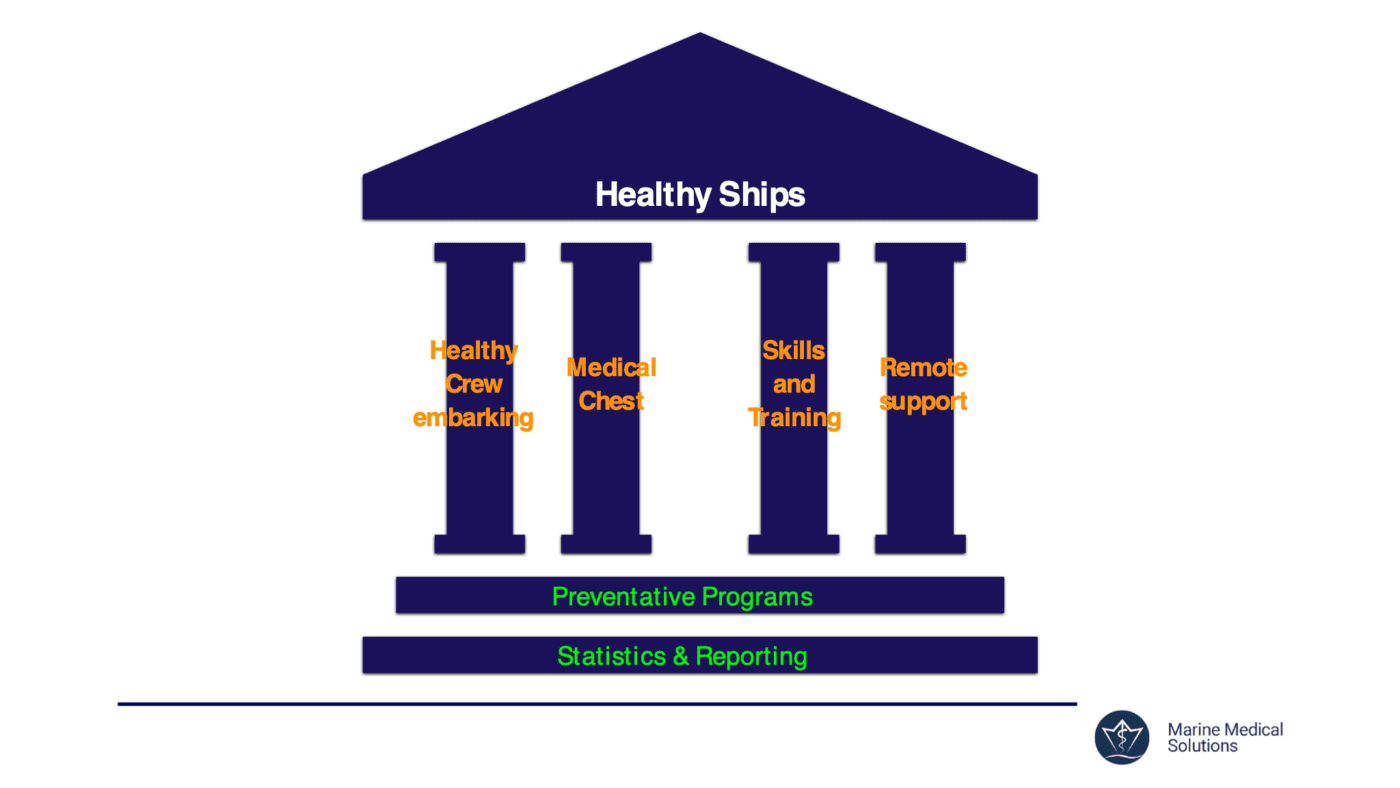Imagine taking a trip to the vastness of the taiga, the tundra of North America, or the desert of Central Asia, with long hikes, only to get sick. It doesn’t have to be a heart attack or a serious open injury, perhaps just a sprained foot. The ankle swells, turns red and blue, the toes tingle, and every step becomes an ordeal.
The tour guide took a medical course 5 years ago to enable him to provide adequate care in such situations. The course was comprehensive, interesting, and good. Since then, the tours have been medically problem-free.
The first thing to do, of course, is to look at the swollen foot. The second is probably to check the emergency medical kit in his backpack because of the pain. So much for an analogy to the situation as it presents itself on a merchant ship.
In the best case, a voyage on a ship starts in good health. Seafarers are required to undergo regular check-ups, making them arguably one of the most scrutinized populations. Passing a pre-embarkation medical exam is a prerequisite for working on board. Of course, there are regional differences in the examinations conducted by flag states, P&I clubs, and shipowners.
Conflicts of interest are inherent here: if a seafarer exceeds the “limit BMI” of 34/35 after a deployment and at his renewed examination, he is ad hoc no longer fit for sea service. Where does the examiner draw the line, and how consistently does he implement it? The consistently and reliably performed ascent examination is key to having “Healthy Crew” on board ships and thus reducing the incidence of predictable medical events.
The “Emergency Package” on board, known as the “Medical Chest” describes the medical equipment on board, such as medicines, medical equipment, and supplies. Most flag states and shipowners follow the “International Medical Guide for Ships” published in 2007 with a little more or less than recommended there.
Since then, a lot has happened in medicine. Guidelines for treatment have been revised, and new drugs are available. Last but not least, the COVID-19 pandemic of recent years has led to additions like oxygen stock, cough syrup, rapid tests, and pulse oximeters. Familiar issues have also become more relevant, such as the development of antibiotic resistance, which has somewhat varied the indications and more significantly modified the view of use (more on this later).
The “Medical Chest” is therefore intended to ensure, at the most up-to-date level possible, that the medical officer on board has the means to care for the crew in the event of medical problems. In fact, the management of this stock is de facto often in the hands of non-medical personnel or pharmacists. The limited knowledge of the current medical standards and possibilities is obvious, and the intention to limit costs does the rest, which makes it rarely “up to date”.
This brings us to the questions of what, when, and how. Nautical officers have to pass medical courses, which have to be repeated at regular intervals, mostly every 5 years. The content is designed according to STCW and flag state requirements. Every 5 years, the gaps in the present knowledge and fears of performing some more invasive measures are understandable as they are ultimately risky.
The intention to perform time case-triggered drills with support is limited but should become the rule. Lastly, there are governmental and private providers of telemedical support. These are used despite or with connection difficulties, inhibition thresholds, or existing self-confidence.
What many a captain accomplishes in terms of medical performance is impressive. Nevertheless, the inhibition threshold should be lowered here. This brings me back to antibiotic therapy: the use of antibiotics for viral diseases is ineffective and counterproductive, not every antibiotic is effective for every disease, and the wrong use carries risks, including allergies, loss of efficacy, and the development of unwanted resistance, which is ultimately relevant even on a global scale. Contact to a professional and competent telemedicine provider therefore helps here on all levels.
